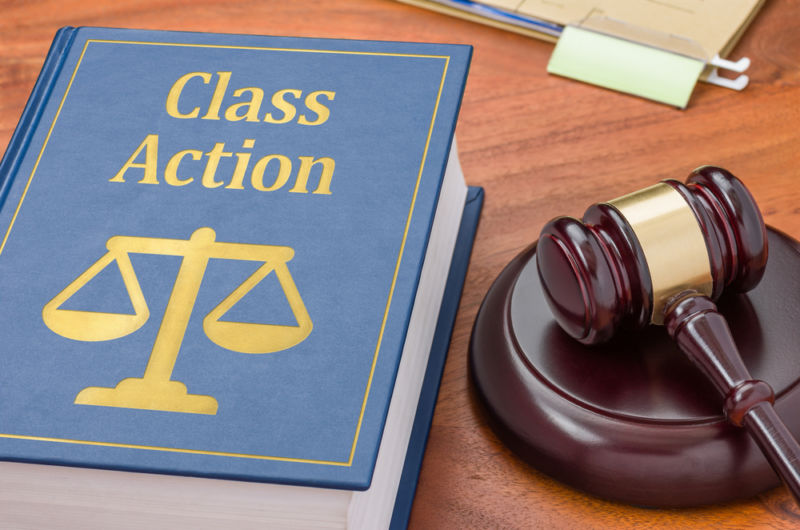Class actions serve as a vital legal mechanism for individuals seeking justice in situations where a large number of people may have been wronged by the same entity or action. By consolidating their claims, individuals can leverage their collective strength, making it easier to take on larger organizations that might otherwise evade accountability. This article delves into the nuances of class actions, from their historical development to the steps involved in joining one, and highlights how individuals can protect their rights throughout the process.
Understanding Class Actions
Definition and Purpose of Class Actions
Class actions lawsuits are filed by one or more plaintiffs on behalf of a larger group of individuals, known as the class. Typically, these individuals share similar claims against a common defendant, such as a corporation or government entity. The primary purpose of a class action is to resolve similar legal issues in a single proceeding, which can enhance judicial efficiency and provide a means for individuals to seek justice when the cost of individual lawsuits might be prohibitive.
By aggregating individual claims, a class action lawsuit can level the playing field between consumers or employees and large organizations. In many cases, such as those involving consumer fraud, product liability, or employment violations, the damages suffered by each class member may be relatively small. However, when taken together, these claims can represent a significant sum of money, justifying the need for a collective action. This collective approach not only reduces the burden on the court system but also deters potential wrongdoing by holding large entities accountable for their actions, as the financial implications of a class action can be substantial.
The History of Class Actions
The concept of class actions has evolved significantly over time. The earliest recognitions of representative lawsuits date back to English common law, but modern class action practices began to take shape in the United States in the mid-20th century. Key legal decisions and changes in procedural rules helped to formalize the class action process.
A crucial point in class action history was the adoption of Rule 23 of the Federal Rules of Civil Procedure in 1966, which established clear guidelines for certifying class actions in federal courts. This development was pivotal in encouraging more plaintiffs to pursue collective legal actions, particularly in civil rights, consumer protection, and environmental cases. The expansion of class actions has also led to significant legal precedents, shaping the landscape of corporate accountability and consumer rights. Landmark cases, such as the 1974 case of *Baker v. General Motors Corp.*, demonstrated the power of class actions to address systemic issues and provided a framework for future litigants seeking redress for widespread harm.
The Process of a Class Action Lawsuit
Stages of a Class Action Lawsuit
The journey of a class action lawsuit involves several critical stages, each of which is essential for ensuring the rights of all parties involved. It typically starts with the filing of a complaint, followed by the certification of the class. During this stage, the court assesses whether the case meets the necessary criteria for a class action. This includes evaluating factors such as commonality, typicality, and adequacy of representation, which help determine if the claims of the lead plaintiff are representative of the larger group’s grievances.
Once the class is certified, the lawsuit moves to discovery, where both parties gather evidence to support their claims or defenses. This phase can be extensive, involving the exchange of documents, depositions, and interrogatories, which are designed to uncover relevant facts and establish a clear narrative of the events in question. After discovery, the case may proceed to summary judgment or settlement discussions. If no settlement is reached, the case will go to trial, where a judgment will be made, potentially affecting all class members, depending on the ruling. The trial phase can be particularly complex, as it often involves expert testimony and intricate legal arguments that aim to persuade the jury or judge of the merits of the case.
Role of the Lead Plaintiff
In a class action suit, the lead plaintiff plays a crucial role, serving as the representative party for the class. This individual is responsible for making strategic decisions regarding the case, including whether to accept a settlement offer or proceed to trial. The lead plaintiff must also demonstrate that they have been personally harmed by the defendant’s actions, thereby establishing the basis for their representation of the larger group. This requirement helps ensure that the lead plaintiff has a vested interest in the outcome of the case, which is essential for maintaining the integrity of the class action process.
Additionally, the lead plaintiff is often involved in working closely with attorneys, contributing to the development of the case, and staying informed about its progress. In certain instances, the court may appoint multiple lead plaintiffs to represent different segments of the class, ensuring that diverse perspectives and claims are considered. This is particularly important in cases where the class encompasses a wide range of experiences or injuries, as it allows for a more nuanced approach to addressing the varied interests of all class members. The lead plaintiff’s engagement can significantly influence the case’s trajectory, as their insights and experiences can help shape legal strategies and settlement negotiations, ultimately impacting the outcomes for everyone involved.

How to Join a Class Action
Eligibility for Joining a Class Action
Not everyone can join a class action; specific eligibility criteria usually apply. Typically, to qualify, individuals must be part of the group that has been wronged—this could mean experiencing similar harm or having common issues of law and fact with the lead plaintiff’s claims. Additionally, the court must determine that the class action is the most effective method for resolving the claims at hand.
Moreover, the class must be defined clearly enough to determine who is included and who is not. Classes can vary widely, encompassing consumers of a defective product, employees affected by wage violations, or individuals subjected to unfair business practices. In some cases, the definition of the class may also include geographical limitations, such as residents of a particular state or region, which can further refine who is eligible to participate. This specificity helps ensure that the claims of the class members are sufficiently similar, which is essential for the court’s approval of the class action. Learn more about conveyancing made easy: what you need to know for smooth transactions.
Steps to Participate in a Class Action
Joining a class action involves several straightforward steps. Initially, individuals should find information about existing class action lawsuits that pertain to their situation. This information can typically be found through legal websites, news outlets, or social media channels dedicated to publicizing these cases. Many organizations also provide resources and databases that track ongoing class actions, making it easier for potential plaintiffs to find relevant lawsuits.
- Identify a relevant class action lawsuit.
- Review the eligibility requirements to ensure you qualify.
- Follow the instructions provided to opt-in to the class.
- Complete and submit any required documentation or claim forms.
In many cases, individuals may also want to consult with a lawyer who specializes in class actions to better understand their rights and options before proceeding. Legal counsel can provide invaluable insight into the nuances of the case, including potential outcomes and the timeline for resolution. Furthermore, a lawyer can help navigate the complexities of the legal system, ensuring that all necessary paperwork is submitted correctly and on time. This support can be particularly beneficial for those who may feel overwhelmed by the process or unsure about how to articulate their claims effectively.
It’s also important to stay informed throughout the duration of the class action. Class members may receive updates regarding the progress of the case, including any settlement offers or court dates. Engaging with fellow class members through forums or support groups can provide additional insights and foster a sense of community among those affected. This shared experience can be empowering, as individuals realize they are not alone in their struggles and can collectively seek justice against larger entities that may have caused them harm.
Protecting Your Rights in a Class Action
Understanding Your Legal Rights
Individuals participating in a class action retain certain legal rights throughout the process. This includes the right to be informed about significant developments in the lawsuit, the right to opt-out of the class at any point before a settlement is finalized, and the right to pursue individual claims if they choose to do so.
Furthermore, class members are entitled to receive updates from the lead counsel regarding the progress of the case, potential settlements, and the final outcomes. Maintaining awareness of these aspects is essential for ensuring that individuals can effectively protect their interests.
Risks and Benefits of Joining a Class Action
Like any legal endeavor, joining a class action comes with both risks and benefits. On the plus side, individuals benefit from pooled resources, reduced legal expenses, and the potential for larger collective settlements that might not be feasible through individual lawsuits alone.
However, there are also risks. Once individuals join a class action, they may forfeit their rights to pursue separate lawsuits related to the same claims. Additionally, individual settlements may vary, which means some class members might receive significantly less compensation than they would have otherwise. Understanding these dynamics is crucial for anyone considering participating in a class action.
The Role of Class Action Lawyers
How Class Action Lawyers are Paid
Class action lawyers typically work on a contingency fee basis, meaning they only receive payment if the class action results in a settlement or a favorable judgment. Their fees are generally calculated as a percentage of the total amount awarded to the class, which aligns their interests with those of the plaintiffs. This arrangement ensures that lawyers are motivated to work diligently on behalf of the class.
In addition to contingency fees, courts often oversee and approve the payment structures to ensure fairness. Transparency is crucial in discussions regarding attorney fees, and class members should always be informed about how and when any legal fees will be deducted from settlements.

Choosing the Right Class Action Lawyer
Choosing an experienced and reputable class action lawyer is essential for the success of a lawsuit. Potential plaintiffs should consider several factors, including the lawyer’s track record in class action cases, their knowledge of the specific area of law, and their commitment to communicating with clients.
- Research the lawyer’s experience and past cases.
- Check for client reviews and testimonies.
- Discuss their proposed strategy for your case.
By taking the time to select the right legal counsel, individuals can greatly enhance their chances of achieving a favorable outcome in their class action lawsuit, ultimately protecting their rights and interests in the process.